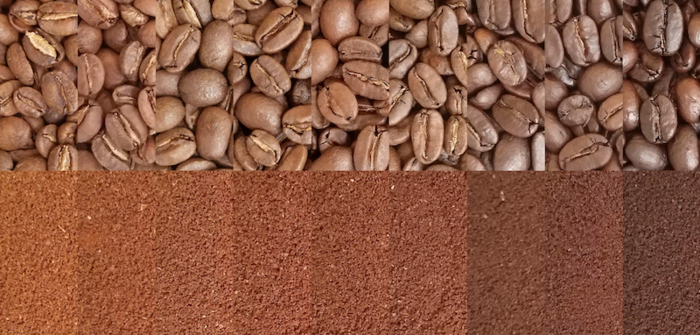
Visionary Fairies in Shrine
Oh, I missed that the new chapter of VFiS is translated. https://mangadex.org/chapter/596737/1
This is about what the plan was for the roasts performed in my latest class, though anything off R series has a bit more flexibility. The goal is to show both a light to dark progression as well as the impact of some of the different decisions you can make about how to get to the end point. R3 is technically performed at 2 different stations. The non-specification of time prior to yellow is intentional because different machines drive differently in that range and it's chemically uninteresting.
Here's the text moved a little farther to the left, yellow dashed line, orange text in the Penguin Attack font set to a larger size.
It looks like today I can spend some more time working on a roast plan design program I've been trying to make usable by non-programmers. The bits that I've already written were used to create things like this or the animated graphs in recent videos. The same code will eventually also get merged into Typica. A key differentiating feature is the ability to interpolate/extrapolate with relaxed cubic splines (no need to mess with control points that aren't on the curve).
coffee thread
Bonus: their math seems to be wrong. DTR ranges from 17.06-21.74% (none at 20%) if I'm reading the timing charts right. Converted ranges to seconds within the particular range for ease of comparison and a total for those who want to check my math.
coffee thread
There's a recommended brew spec which I completely ignored. Rather than doing a 1:1 drip in 3 minutes I opted for 24g in a 16oz press with 4 minutes.
Continuing on with the gift coffee, it looks like everything that I got is roasted what I'd consider light. French press is probably not the ideal brewing method for this particular coffee, but especially as it cools it's quite good. The Ethiopian coffee dominates the flavor profile, but the Guatemalan coffee in the blend lends better balance to the cup.
coffee thread
As expected of a Mokka, really small seeds. I have raw coffee that's larger than some of these, but of course larger seeds don't correlate all that strongly with anything on flavor, though they can present some challenges in some roasting machines.
Continuing on with tasting my gift coffees is a Maui Mokka. Still pretty light, but quite a bit darker than yesterday's Mexican coffee (which read at almost an 80). This one came in at 51.5/62.2. I tasted this brewed with the lab water at the event so it'll be interesting to taste what kind of differences I observe using my water.
coffee thread
Very light roast, which isn't necessarily a bad thing, but there's a distinct vegetal flavor that comes across like if you were to suck on the raw coffee. I devote a whole slide to this in my latest class and this flavor is highly correlated with ending temperature. On my machine the transition point is a temperature 1/5 between cracks.
- Software
- https://typica.us
- Send Money
- https://typica.us/payment.html
Author of Typica software for coffee roasters.
